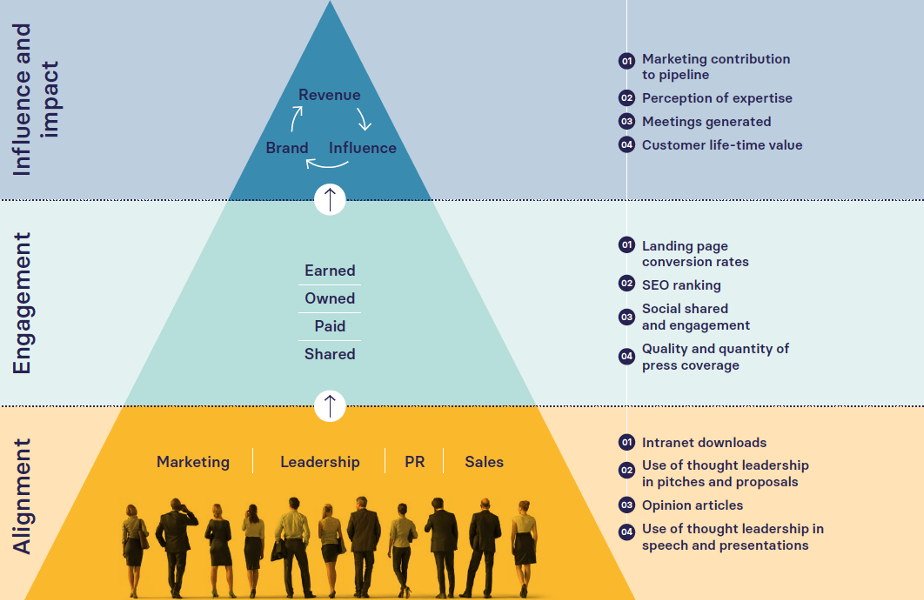At a time when the world is facing the reality of a global pandemic, the majority of the population is in lock-down and the economy largely closed, it’s important to start reconsidering our content strategies.
This is a time for the highest order of political, economic, social and technological leadership. Businesses of all sizes will be keen to play their part in unfolding events and will soon turn to delivering thought leadership content to support strategy in the post-corona world.
But how do we demonstrate the value of thought leadership? This is a question addressed by the new Thought Leadership Network (TLN), supported by the FT. Their inaugural ‘Proving Our Value’ report provides a wealth of insight into the issues surrounding thought leadership content and the challenges of measurement.
With swinging cuts to GDP, and fast-rising unemployment, businesses will have to deal with the effects of the shutdown for some time to come. We can expect new barriers to business investment, a laser-sharp focus on costs and a demand for demonstrable marketing ROI.
Yet the TLN argue ROI is a dangerous distraction when it comes to evaluating thought leadership. Why? It is an inherently blunt instrument that encourages selling to existing customers and ignores the demands of long-term growth. It also suffers from a lack of a consensus around attribution models.
A new measurement model
So, what measurement model do the TLN propose as a positive alternative to ROI? They suggest an approach that provides metrics across three categories: Alignment, Engagement and Influence (Impact).
The weighting attached to the three categories is significant. TLN suggest that 40% of effort should be focused on alignment, 40% on influence/impact and only 20% on engagement.
Suggested metrics for each of these categories are shown below. There is a clear emphasis on placing thought leadership at the heart of the business, promoting collective ownership and focusing on longer-term impact.

Alignment vs engagement
So why does the TLN approach put far less emphasis on engagement? They argue that even interim engagement metrics including dwell time, bounce rates, downloads, shares and retweets do not stand up to scrutiny, citing Nielsen research that shows a negative correlation between click-through rates and offline ROI. Instead, TLN prefer to focus on organic search and social performance as the key metrics measuring the influence and impact of thought leadership content.
Overall, TLN believe a stronger focus on organisational alignment across leadership, marketing, PR and sales is what will determine success. Put another way, if you are producing genuinely novel and exciting ideas then people will want to integrate them into their own activities. The problems arise only when your content isn’t genuinely innovative.
The power of commercial insight
Though original ideas and thinking should be at the heart of any thought leadership campaign, they aren’t enough on their own. Content must also create urgency through genuine commercial insight while also building emotional connections between the brand and its audience.
Ultimately, good thought leadership content should undermine existing thinking and redirect attention toward an unknown need, supported by evidence, facts and research.








